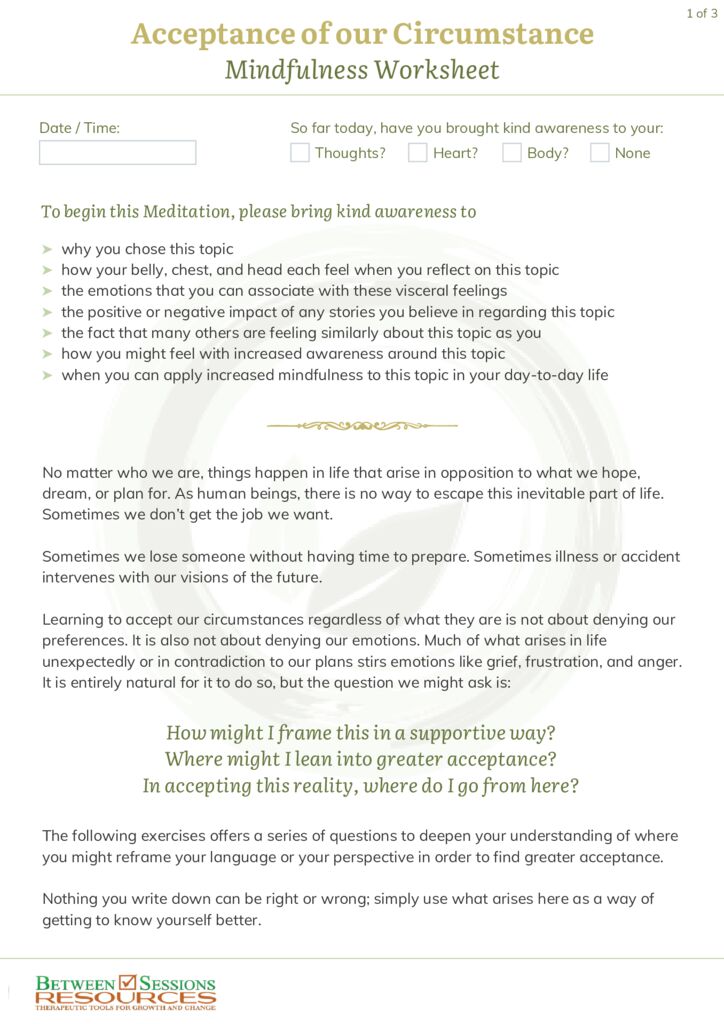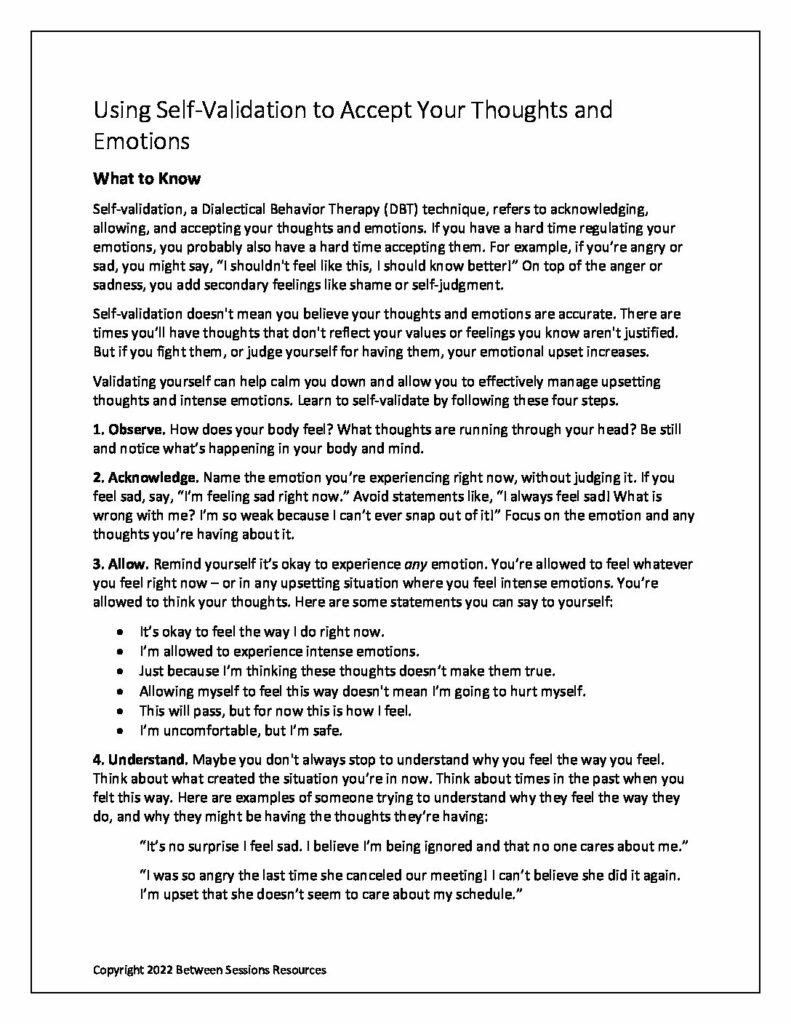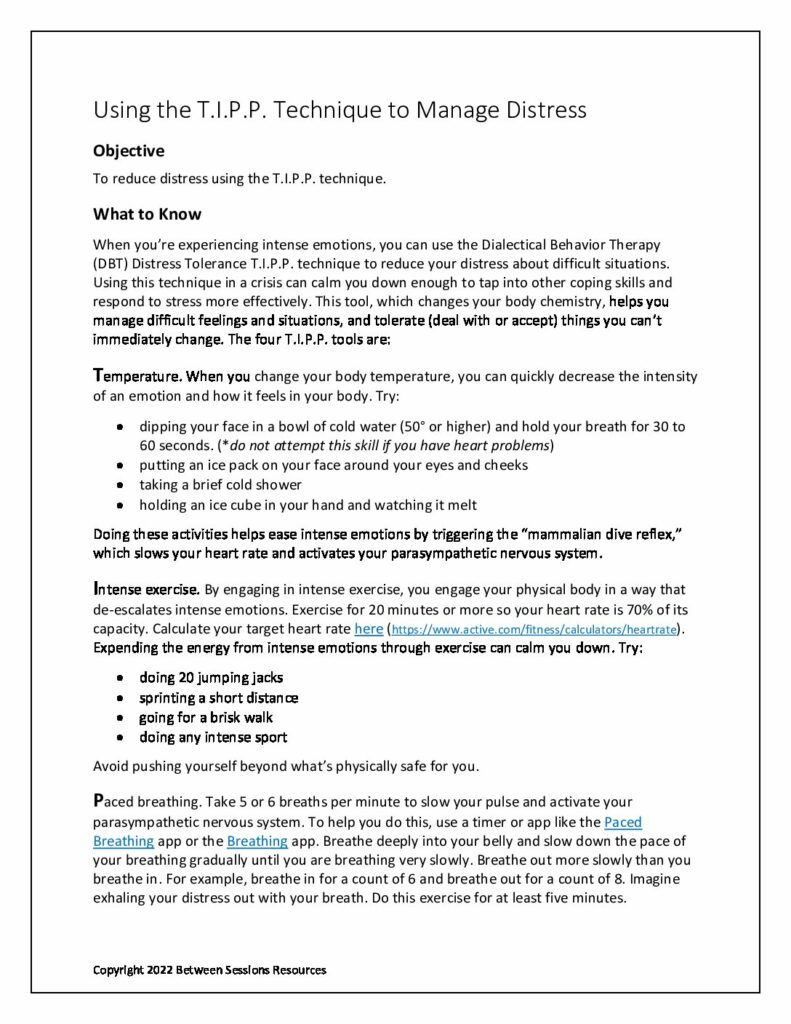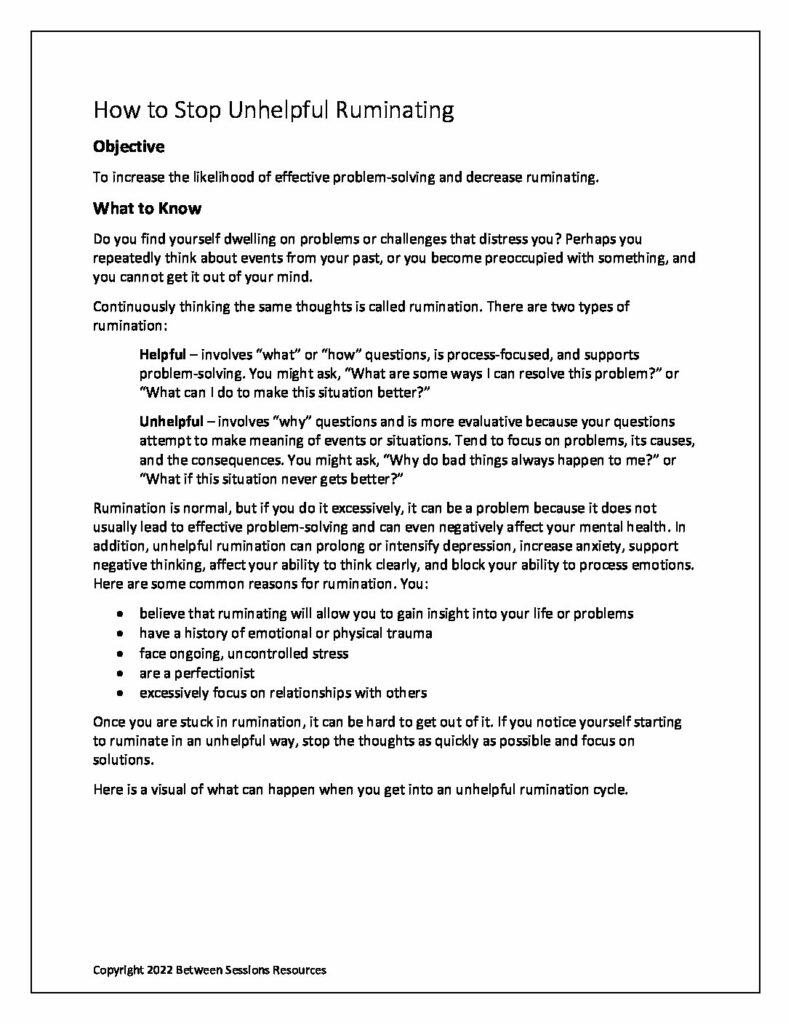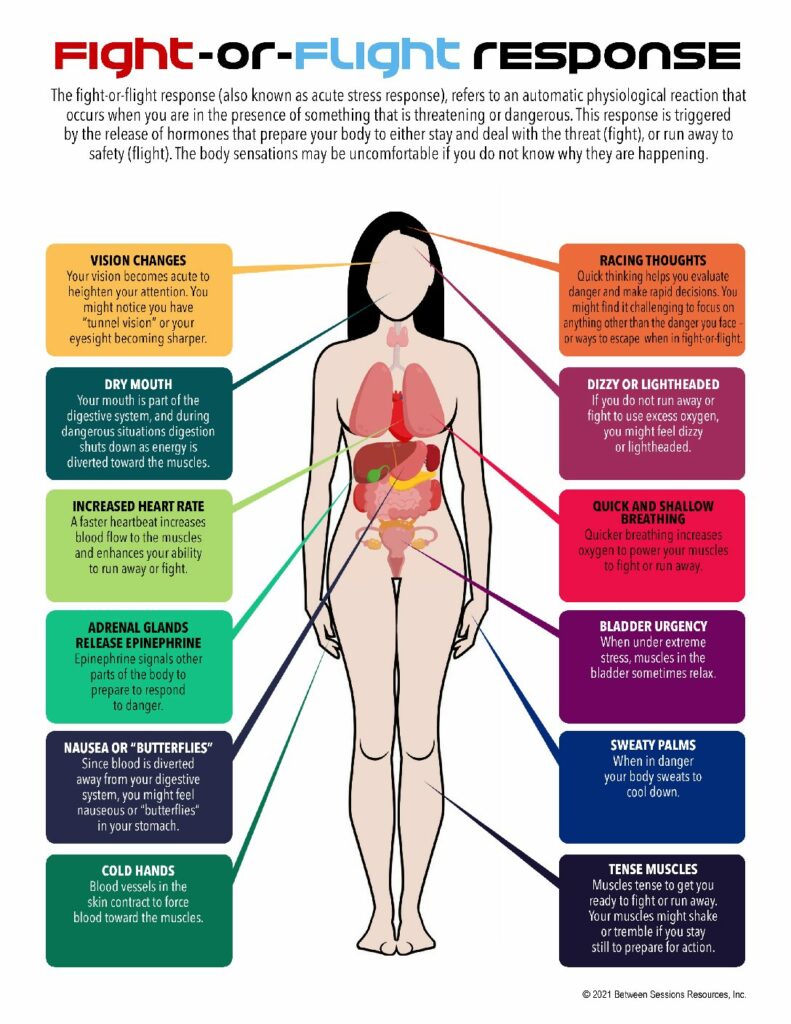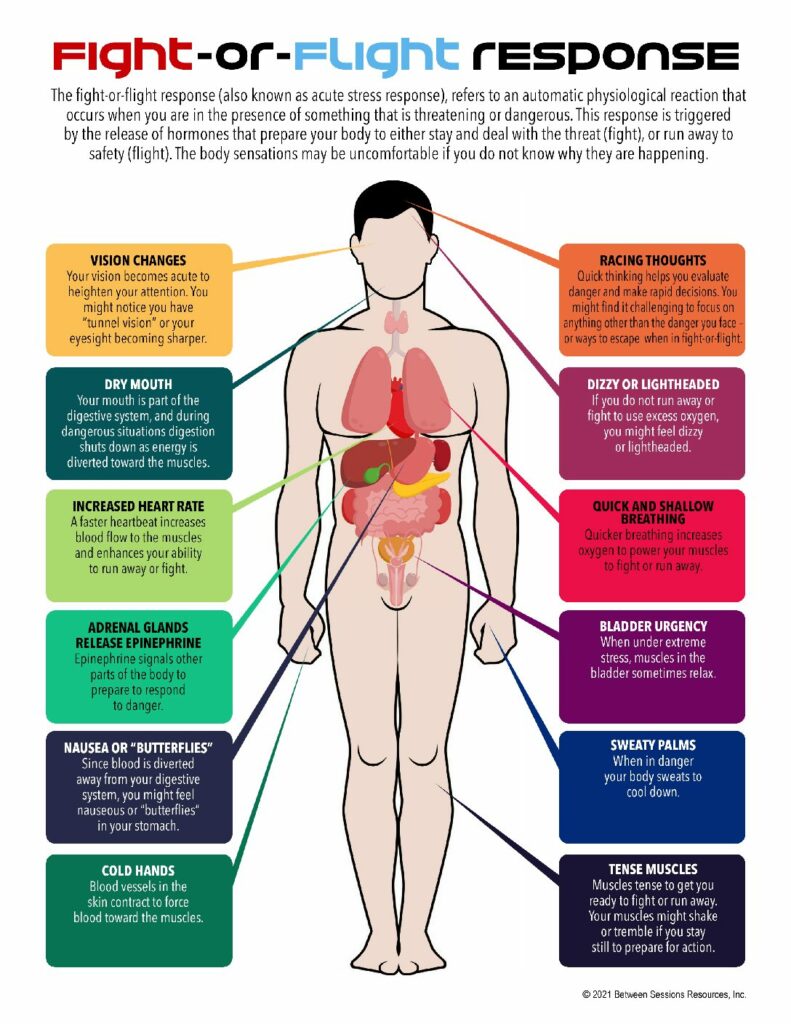This mindfulness worksheet helps people accept what happens to them in life, rather than dwelling on disappointment and resentment. (0322, mindfulness)
This worksheet presents an 8-step process to reduce a person’s anxiety about flying. Suggestions are also made for additional resources. (0222, fear of flying, anxiety, phobia)
This worksheet helps people understand the DBT concept of self-validation, acknowledging, allowing, and accepting your thoughts and emotions. The 4 steps of self-validation are: Observe, Acknowledge, Allow and Understand. A chart helps people practice these four important steps. (0122, DBT, self-acceptance)
This worksheet describes the T.I.P.P. Technique used by advocates of DBT to deal with intense emotions. The acronym stands for: Temperature, Intense Exercise, Paced Breathing, and Paired Muscle Relaxation. A chart is included for clients to keep track of which technique is most helpful. (0122, DBT, emotional regulation, emotions, grounding)
This worksheet is designed to help people who persist in thinking about the same thing over and over again without solving a problem or addressing an issue productively. The worksheet distinguishes from helpful and unhelpful rumination and helps people understand when rumination becomes excessive. The worksheet gives 10 tips on how to deal with unhelpful and excessive rumination as well as practical steps to deal with this problem. (0122, OCD, rumination, anxiety)
This infographic reflects a person’s automatic physiological reaction to the presence of something that is perceived as threatening or dangerous. Useful for explaining the body’s reaction to stress, fear, or anxiety. (0122, stress, panic disorder, anxiety, fear, phobia)
This infographic reflects a person’s automatic physiological reaction to the presence of a something that is perceived as threatening or dangerous. Useful for explaining the body’s reaction to stress, fear, or anxiety. (0122, stress, panic disorder, anxiety, fear, phobia)
This worksheet describes the TRAC technique to help people who are stuck in excessive thinking or worrying after a breakup. The TRAC technique involves: identifying triggers, understanding response to riggers, avoiding dysfunctional patterns, and finding alternative coping techniques. (2021, rumination, worry, breakup, divorce, relationship)
This worksheet is designed to help people understand how their anxiety and fear is manifested by physical reactions. It describes a body scan meditation to help people calm their physical reactions and cope with their emotions. A chart is included to help people understand what triggers their physical reactions. (1221, anxiety, fear, amygdala, meditation, body scan)
This worksheet is designed to help people who are consumed by trying to meet the needs of everyone around them during the holidays. It is designed to help people understand the reasons for this behavior and the cost. It provides 11 ways for people to cope with this problem and take better care of their own needs. (1221. holidays, depression, anxiety)

